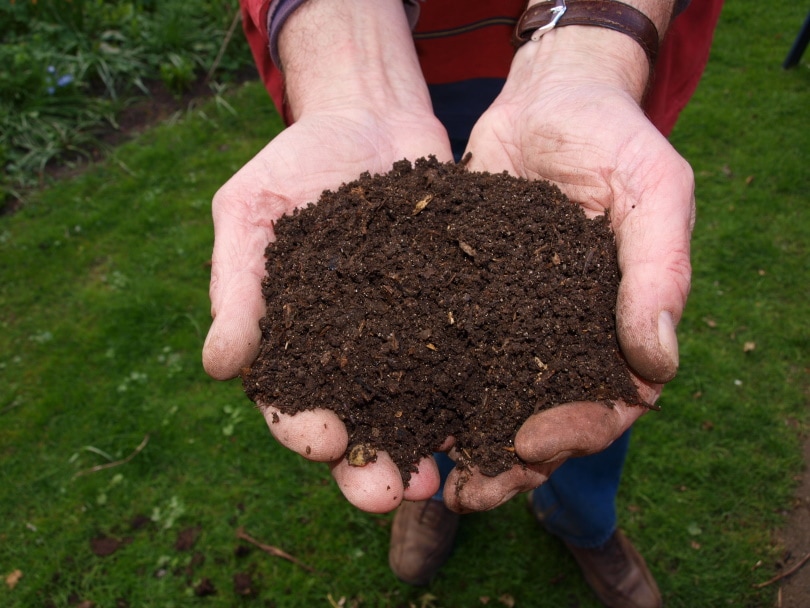What Is the State Flower of Utah? Uses, Reasons, & History
-
Pete Ortiz
- Last updated:

A state flower is a specific flower designated by the state legislature as the official floral emblem of a state. Each of the 50 American states has a state flower. Utah is the 45th state of the United States of America, with the sego lily being the state’s symbol flower.
The sego lily (Calochortus nuttallii) is a perennial bulb native to the Western United States. The flower means a lot to every resident of this state. Today, we’ll tell you how Utah got the sego lily as its official state flower, its significance, and uses.
Keep reading for a deeper insight.
Origin of the Sego Lily
The plant was named after its discoverer, Thomas Nuttall. He was an English botanist and zoologist who traveled to the United States in 1857. The genus name Calochortus comes from the Greek word ‘kalos,’ meaning beautiful, and ‘chortos,’ meaning grass.
Usually, the sego lily is referred to as Mariposa lilies. The flower was adopted as the state flower of Utah on March 18, 1911 by the Utah State Legislature. They chose this flower because of its historical significance.
The sego lily was eaten as food by Native Americans during famine or drought. However, it represents the beauty and uniqueness of this diverse American state.

How Did Sego Lily Become Utah State Flower?
Every state in the United States has a state flower considered indigenous to the region and found in plenty. It must have a symbolic meaning and a historical significance.
The origin of the state flower dates back to 1890. Women across the US were getting ready to honor the 400th anniversary of Christopher Columbus’s voyage during the Columbian World’s Fair in Chicago. It was the first Fair where women were allowed to attend. They were given roles such as leadership and representation. Many of them attended Chicago’s Columbian World’s Fair.
Among the roles women were given was to choose distinct and one-of-a-kind objects to represent each of the 50 American states. Most of the women chose flowers to represent each American state. It was to be known as a flower emblem or a state flower. So, all the women in all the 50 states conducted campaigns to choose their flower emblem. Utah women were no exception.
They chose the sego lily flower, but it became the official state flower of Utah later on. That’s when the Board of Lady Managers of Utah met and deliberated on selecting a flower emblem to represent the state.
They had other flowers to choose from, including the Indian paintbrush, wild rose, evening primrose, and marguerite. After discussing, they agreed that women in Utah would vote. They would vote at the Territory Fair in Salt Lake City as it was fast approaching. The sego lily got an overwhelming majority of votes.
In 1911, William Williams (Utah state senator) sponsored a bill in the legislature to make the sego lily the official state flower of Utah. It was only a formality because many people in Utah, including children, had already embraced it. They were taught about the flower in their classrooms. So, nobody opposed the bill when it was taken to the legislature. And that’s how sego lily became the official state flower of Utah in 1911.
Characteristics of the Sego Lily
The sego lily plant is a beautiful lily with white, yellow, or lilac flowers and yellow centers and purple stripes. The flower grows in the sage rangelands and open grasslands in the Great Basin of Utah.
It’s not only one of the most abundant lilies in western North America but it has been cultivated and used by native tribes for thousands of years.
Here are several characteristics of the Utah state flower!
Flowers
Usually, the flower is about 3 inches (10 centimeters) across. It has six petals that form a star shape at the center of each bloom. The flowers also have three sepals that form a cup around the base of each flower, where its roots are.
The blooms come in shades of white, pink, or yellow with a yellow eye at their center and yellow marks at the base.
Height
Sego lilies grow between 10 and 20 inches high (25 to 50 cm) and 6 to 9 inches wide (15 to 22 cm). The plant may be single- or multi-stemmed depending on the natural environment where it grows.
Soil Type
The sego lily grows best in well-drained, slightly alkaline soil. It can be loam or sandy soil, but the flower will tolerate almost any soil, except extremely wet or dry one.
The plant does best with a pH between 6 and 7.5, which is neutral to slightly acidic. For this reason, it can be grown in containers. You don’t have to add any soil amendments or fertilizers. Also, it is drought-resistant, meaning it can do with little water.

Leaves
Sego lilies have leaves arranged in an upright position. They also have a couple of basal grass-like foliage. It’s different from many other plants, which grow their leaves horizontally or at an angle.
The leaves’ straight arrangement allows for more sunlight absorption by the plant, which helps it grow well in areas with limited sunlight.
Propagation
Usually, sego lilies are propagated from seed, but you can also propagate them from offsets or bulbs. Propagating them from bulbs is the best way because the seeds take a long time to germinate.
The process for both is similar. Just place the bulb in a container with a drainage hole. Then, fill it with potting soil or sand to about one-third of the depth of the bulb. Place the container in full sun or partial shade outdoors. This way, it receives at least eight hours of sunlight per day.
Then, water when the soil is dry to about one inch below the surface every two weeks during warm weather.
Climatic Conditions
Plant sego lilies during spring or fall, when there’s no danger of frost. Planting them in early spring will give them more time to become established before the summer heat arrives. Also, grow them in full sun if possible.

Locations in the United States
You can find sego lily growing in the high desert regions of the Great Basin, the Rocky Mountain States, and the western Great Plains. It’s also native to Utah, Colorado, North Dakota, South Dakota, Nebraska, Wyoming, Arizona, New Mexico, Montana, Idaho, and Nevada.
What Are the Uses of Sego Lily?
Culinary Uses
The sego lily plant has several culinary uses. Native Americans used the flowers, seeds, leaves, and bulbs in their dishes. The bulbs could be used in soups and stews and the leaves would be cooked like spinach or added to salads.
These days, the leaves can be eaten as greens while the bulbs are ground into powder and used with cereal flours to make bread. The seeds and flowers are also edible. They have a nutty flavor used as spices in different dishes.
Decorative Uses
The sego lily has many uses as an ornamental plant. The plant grows tall stems with many flowers that open up into beautiful flowers. You can use them in bouquets or arrangements for weddings or parties. They also make excellent table centerpieces!
Also, sego lilies look beautiful when they are in bloom. So, people often grow them in their gardens or yards because of how pretty they look.

Other Utah State Symbols
Apart from the sego lily, there are other state symbols including a rock, bird, fossil, insect, and fish.
They make the official emblems of the US state of Utah. The state legislature designates official symbols and adds them to the list when adopted by the state’s governor.
Here’s a summary of some of them.
| Name | Utah State Symbol | Date Officiated |
| State Tree | Blue Spruce (Picea pungens) | 20th February 1933 |
| State Bird | California gull (Larus californicus) | 14th February 1955 |
| State Motto | Industry | 4th March 1959 |
| State Emblem | The Beehive | 4th March 1959 |
| State Gem | The Topaz | 4th February 1959 |
| State Animal | The Elk (Cervus canadensis) | 1st February 1971 |
| State Fish | The Rainbow Trout (Salmo gairdneri) | 1st February 1971 |
| State Insect | The Honey Bee (Apis mellifera) | 16th March 1983 |
| State Fossil | Dinosaur Allosaurus | 1988 |
| State Grass | Indian ricegrass (Oryzopsis hymenoides) | 13th March 1990 |
| State Rock | Coal | 13th March 1991 |
Conclusion
Utah is a unique place with a lot to offer. It has a large amount of beautiful wild flora and fauna. The beautiful state of Utah is also home to many beautiful species of flowers, plants, and trees.
If you are surprised, don’t be. Utah’s state flower, the sego lily, has deep roots in art, religion, and culture. It is truly a unique representative of the Beehive State. This beautiful flower is also the Utah State emblem. It’s even depicted on the state flag, helping to create a sense of community pride among citizens in Utah.
Hopefully, this post has left you with a better sense of why it became Utah’s official state flower and how it came to be so, as well as its uses.
See also:
Featured Image Credit: stephmcblack, Pixabay
Contents


